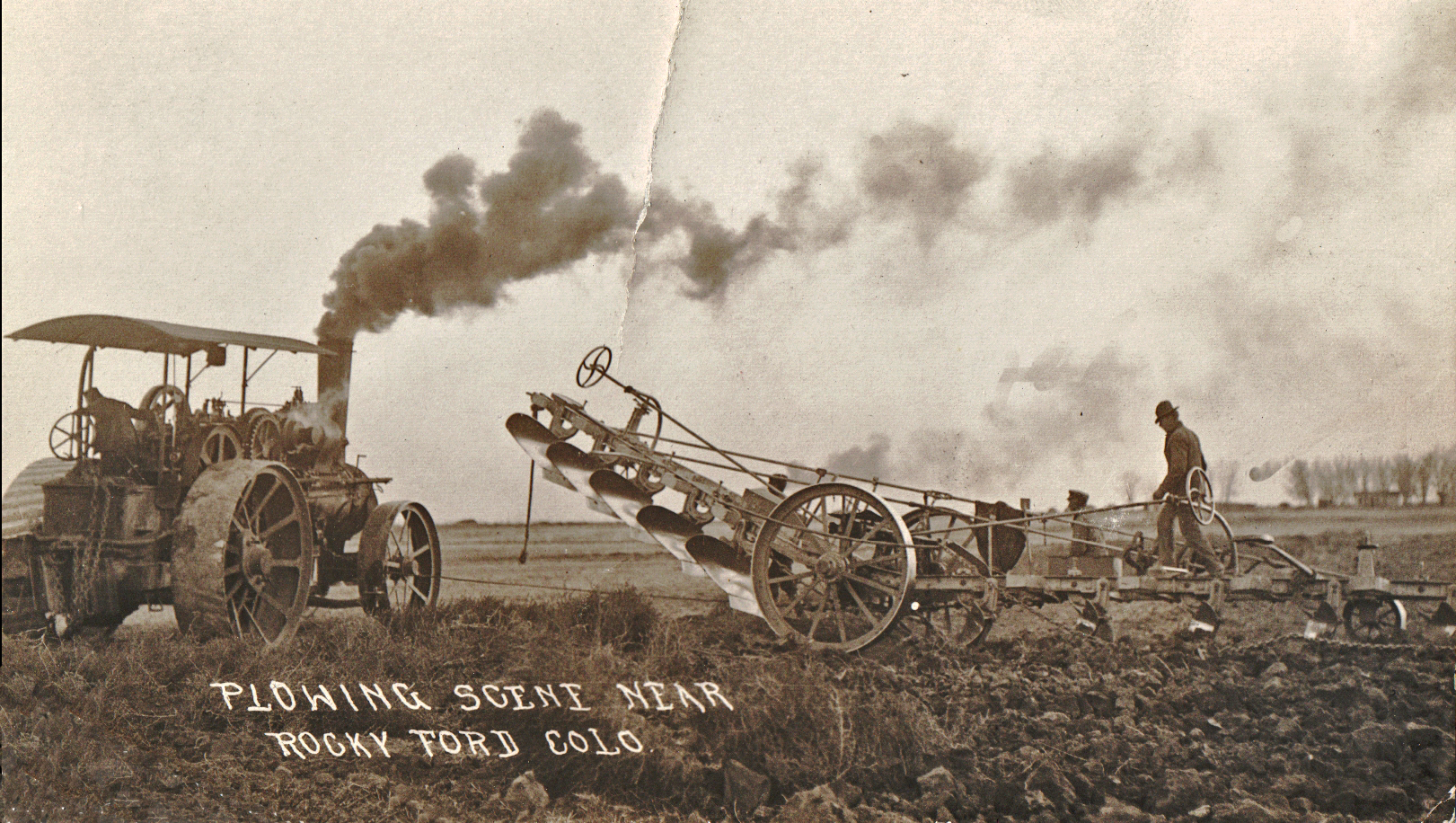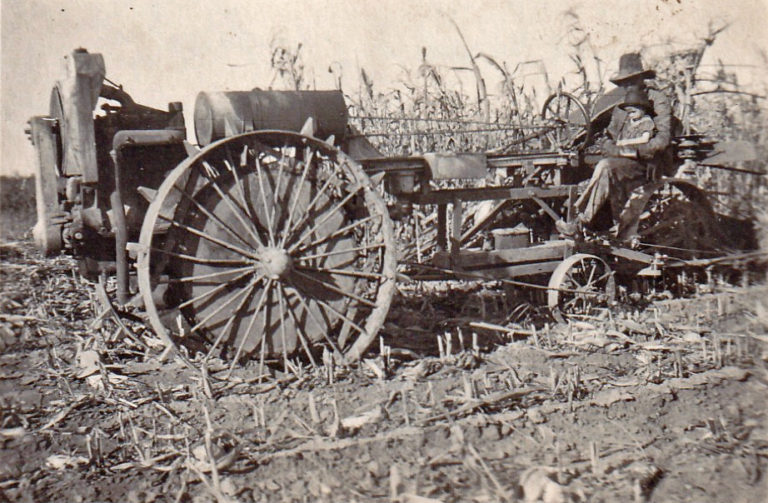Pictured in this photo postcard is a balance plow and steam tractor in operation outside of Rocky Ford. The invention of the balance plow rested on work performed in the mid-19th century by John Fowler, an English engineer and inventor. Fowler, having witnessed at first hand the potato famine in Ireland in 1845, decided to commit his time and resources to producing food more efficiently. When he was killed in a hunting accident in 1864, his brother Robert and a team of colleagues continued his work. One member of that team was David Krieg, a Scotsman, who conceived a two-way plow, such as the one seen here, with two sets of plowshares facing each other on a frame which could be “see-sawed” on a two-wheeled axis.
As you can see in the picture, the frame to the right of the plow’s wheels is in the down position with its five left-facing shares in the soil. The left end of the frame, which is currently in the up position, has five right-facing shares. When the plow reaches the end of the row, the operators will maneuver the plow for the next cut. To do this they will probably utilize the pull-rope you can see hanging from the left end to bring that end to the ground for the plow’s trip back across the field. I wonder if the man standing or walking on the down end of the frame is planning to walk to the other end to help see-saw it down to the ground. Note the two opposite-facing steering wheels, each with its own seat platform, to allow the operator to steer the plow.
This plow would most likely have been pulled to and fro via cable by two steam tractors, with one stationed at each end of the field being plowed. The cable was probably wound in and let out on a horizontal windlass located under the boiler of each tractor. In the photo you can see the cable stretching from the plow into the tractor at about the height of the tractor’s front axle.
The cable method of plowing reportedly worked well where the soil was too soft to support the weight of a tractor; it’s also been said that this design prevented the packing of clay soils. The above-referenced David Krieg had the following to say on this subject regarding the advantage of the cable method in the days when horses powered plows: “All treading and compression of the soil and sub-soil associated with horse cultivation is thereby entirely avoided and the implement is driven at a much more rapid pace, throwing up the soil to a greater depth and in a loose state enabling it to derive full benefit from the influences of the atmosphere. In horse plowing the case is just the reverse, for the sole of the plow and the treading of the animals so consolidates the bottom that the necessary chemical action between soil and sub-soil, and consequently all escape of gas and water is prevented.”
Here’s a link to a YouTube video showing a portion of a Scottish plowing competition involving a six-share balance plow and steam tractors: https://www.youtube.com/watch?v=Wc0QNh0P_0k . The tractors are Fowler “BB1’s” manufactured by Leeds of Yorkshire, England. The one pictured at the beginning of the video was manufactured in 1918. It’s interesting to note that a man perches on a seat at the back of the plow on the side looking away from the plowshare faces. Maybe he’s adding weight to help the shares stay as deep in the soil as possible. At 1:43 and 4:16 you can see three men bringing the “up” end to the ground and maneuvering the plow into place for its next cut. It’s obviously a heavy bugger.
REFERENCES:
- “Fowler’s Chapter Three: Story of the Steam Plough Works,” by Tom Downing, Farm and Dairy,” December 24, 2014, at https://www.farmanddairy.com/columns/fowlers-chapter-three-story-steam-plough-works/232865.html
- “List of traction engine manufacturers,” Wikipedia at https://en.wikipedia.org/wiki/List_of_traction_engine_manufacturers
- “Plough,” Wikipedia at https://en.wikipedia.org/wiki/Plough
- “2 Fowler BB1 Steam Engines ploughing with 6 furrow Balance plough Plow,” YouTube. at https://www.youtube.com/watch?v=Wc0QNh0P_0k


